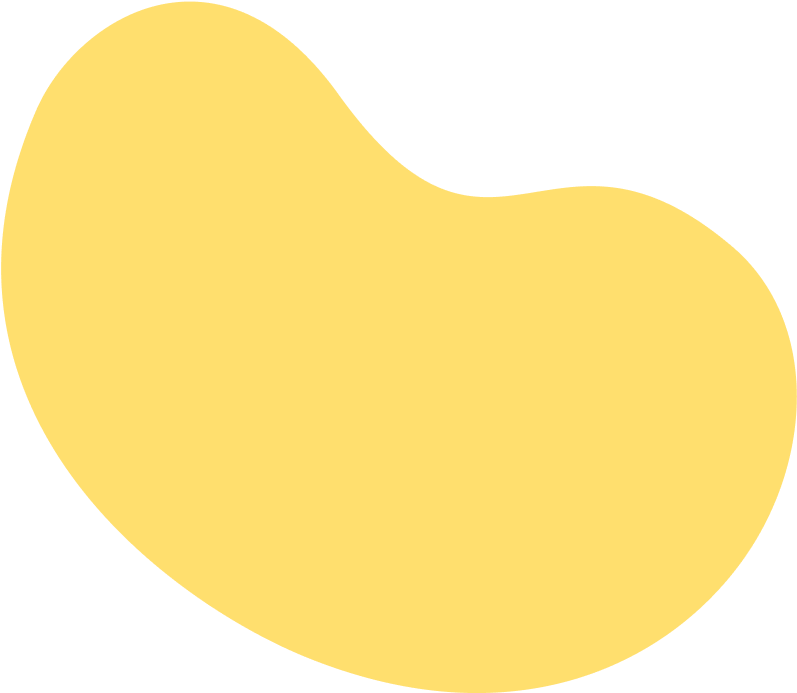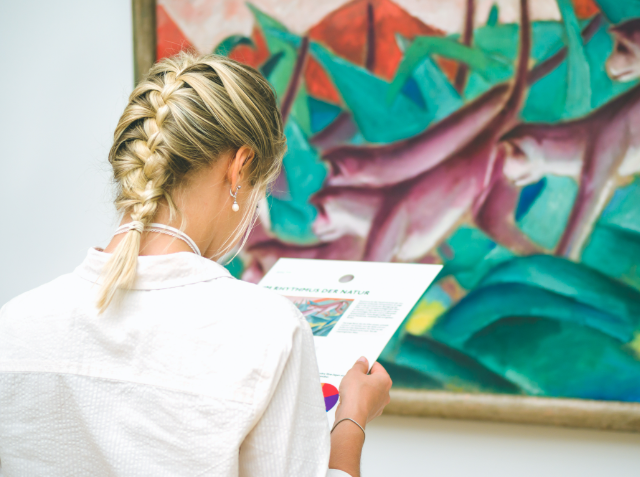- Home
- Industries
- Tourism Hospitality
- Museums Web Design
Web Design for Museums: 7 Stellar Web Design Tips for Museums
Maximize your museum’s digital presence with a custom and responsive web design. Use a simple layout, stunning visuals, integrated social media, and attention-grabbing CTA buttons. Regularly test and update for optimal user experience.
-
insights from 38,900+ hours of hospitality marketing experience
Did you know that 94% of first impressions about your museum relate to web design?
Your museum’s website design has a lasting impact on your audience — and you want to make sure it creates a positive user experience. It’s crucial that you invest in your web design to reach, connect with, and convert potential museum visitors and members.
On this page, we’ll provide you with seven excellent web design tips to help you create a useful museum website. If you need help with museum web design, call us today at 888-601-5359 to speak with a strategist about creating your custom website.
1. Get a custom design that is unique to your museum
If you want the best museum website, you must invest in building a custom site, tailored to your individual goals and audience.
Implementing a unique color scheme sets your museum’s website apart from competitor’s sites.
If you think about big chains, like Target, Walmart, or McDonald’s, they have distinct color schemes that help people easily recognize their brands. Since people associate colors with specific businesses, this is a great way to boost brand awareness with your web design.
If you already have a color scheme set in place, you can implement it on your website. You’ll want to stick to three to four colors for your web design:
- Your main web design color
- One to two accent colors
- A text color
In general, you’ll stick to these colors for your pages on your website. However, you may need to add another color or two for specific elements on your site, like call-to-action (CTA) buttons.
It’s essential that you choose your color scheme and remain consistent to help build brand recognition. When your audience is more exposed to your brand, they will be more likely to remember and visit your museum.
When you invest in museum website design, focus on building a custom website that is unique to your museum. It’s the best way to help you create a site that leads your museum to stand out from your competitors.
At WebFX, you won’t see a cookie-cutter website design from us. All of our sites are designed and tailored to our clients’ business and goals. Call us today at 888-601-5359 to learn more about our customized website design.
Hear What It’s Like to Work With WebFX!

“All of my interaction with our account manager has been so positive. I worried about the amount of money I was spending and she has made it worth my while. I understand there is a team behind her as well but I have been so impressed. Her responsiveness is outstanding.”
Real Estate Rental
2. Keep your museum website simple and easy to use
One of the biggest mistakes businesses makes when they design their website is putting too much on it. Since your museum’s website is a hub for information, you want to make it as easy as possible for visitors to find the information they need.
If you want to create the most effective website for your museum, keep it simple. Don’t overwhelm your audience with dozens of photos, text, moving graphics, and colors. Your audience will be deterred and likely never set foot inside your museum.
To streamline visitors’ experience on your site, you’ll want to simplify your navigation. When users enter your site, they are looking for information about your museum, and it’s crucial that they can easily navigate to key pages.
With your navigation, you want to have broad headings and organize each tab with subheadings and categories. For example, you can have a general category tab like “Exhibits” and break down that tab into smaller subcategories of the different exhibits at your museum. This setup keeps it organized for your site visitors.
Not sure if your site’s navigation is effective? Test it out by having someone unfamiliar with your site browse to find a particular page. Testing will help you understand how your audience finds information on your museum website so you can better optimize it and get more foot traffic to your location.
3. Add visual elements to make your museum website eye-catching
The best museum websites include visuals to engage visitors. Your audience doesn’t want to visit your site and see walls of text. It’s crucial that you add visual elements to make it enjoyable for your audience.
There are two main visual elements you’ll want to use on your website to garner interest: photos and videos.
Photos are the most common visual elements you’ll see on a museum’s website — and they give potential visitors an inside look at the facility.
Adding photos of your exhibits, events, staff, and museum guests help your website come to life.
Remember to avoid using stock photos as much as you can to give your museum’s website an authentic feel.
Videos also have a substantial impact on your audience because they encourage visitors to remain on your museum’s website longer. People will take the time to watch your videos, rather than read an entire page of text. These videos can reduce your bounce rate, which sends a positive signal to search engines and can help you rank better in the search results.
By adding videos to your museum’s website, you can take visitors on tour and allow them to see different parts of your museum. There are many opportunities with video marketing to showcase your museum and get people to visit and become members.
If you want to create an impactful web design for your museum, invest in visual elements. They will make your site pop and help you keep more traffic on your site.
4. Integrate web design elements to connect with leads interested in your museum
If you want to design a successful website for your museum, you must integrate features that allow you to connect with leads.
The first element to include is social media buttons. Social buttons are an excellent opportunity for your audience to connect with you through social media. Include buttons for all social sites you use, whether it’s Facebook, Twitter, Instagram, Pinterest, or LinkedIn.
You’ll want to integrate these buttons into the header or footer of your website. This integration ensures that your audience can always find your social sites if they’re going to connect with your museum. It’s an excellent way for you to communicate with leads and send them more information about your museum.
Another great way to connect with leads is by adding an email sign-up bar. Email marketing allows you to send your audience tailored content that entices them to visit your museum.
You can integrate email sign-up bars in your site header, footer, or in a pop-up message. These are all great places to include your email sign-up bar because it ensures your audience will see it, just like they will see your social buttons.
Your email sign-up bar should be simple and straight forward. Make it easy for your audience to sign up to receive emails from your museum. Once they sign up for your email list, you can send them valuable, tailored content that entices them to visit.
Effective museum web design integrates elements that allow your audience to connect and learn more about your museum.
5. Integrate responsive design to provide a good experience on all devices
Responsive design is a crucial element to successful museum web design.
People will access your museum’s website on different devices. If you want to keep visitors happy, you must integrate responsive design to ensure your website looks great on all devices.
So, why is responsive design important?
Responsive design is vital to your website because your website doesn’t look the same on every device without it. Imagine trying to access a desktop version of your site on a mobile device. Your text and photos would be small and would cause your audience to continually zoom in an out to read information and check out your site.
If you think that sounds like poor user experience, you’re right! Users don’t want to struggle to read the information on your site, regardless of the device they use. Responsive design ensures that your website adapts to whatever device a user is using to provide a positive and seamless experience.
The best museum websites include responsive design to provide visitors with the best possible experience, regardless of the device they use.
6. Make your CTA buttons pop off the page
CTA buttons are crucial for useful museum websites. If you want people to take the next step and contact or visit your museum, you need to include CTA buttons to tell them what to do next.
Many people will visit your museum website and like what they see, but without CTA buttons, they might not know what to do next. CTA buttons can help your audience proceed and take critical actions like signing up for your email newsletter or contacting you to learn more.
When you design CTA buttons on your site, make them bold and noticeable. Visitors’ eyes should automatically draw towards the button.
You’ll want to choose a CTA color that pops off the page and contrasts from the other colors on your site. Your color choice helps your CTA buttons stand out and encourages people to click.
If you want to create an effective web design for your museum, integrate CTA buttons that stand out on the page to get your audience to continue to engage on your site.
7. Test your website regularly to ensure it drives the best results
When you’re building the best museum website, it’s crucial that you continually test your site. The first design you create for your website isn’t your most effective design. There is always room for improvement and to create a web design that has a substantial impact on your audience.
To produce the best version of your website, A/B test different elements on your museum’s site. Only test one aspect at a time to ensure that you’re getting precise results. It will help you see which changes improve your website.
By testing your website, you will produce the best version of your website for your audience. It’s the best way to help you create an impactful museum website design that engages visitors and entices them to visit your physical location.
Start building your dream museum website today
Your website is the heart of your online presence. If you want to make a strong impression on your audience, you must invest in your museum’s website design.
If you’re ready to start building your customized website, WebFX can help. We have a team of over 500+ experts that will help you make your dream website. If you need a website fast, we can build one for you in 30 days with our program RainMakerFX.
RainMakerFX allows you to build a website fast that focuses on generating leads and converting them. You get 20 pages of content, three custom lead forms, and three hours of design time to create a custom look for your website. If you want to get new patrons into the door of your museum, you can use RainMakerFX to help you build an effective website fast.
Ready to start building your dream website? Contact us online or call us today at 888-601-5359 to speak with a strategist about building a custom website that drives results for your museum!
We Drive Results for Museums
- Dedicated account manager backed by 500+ digital experts
- Renowned for our communication and transparency



Table of Contents
- 1. Get a Custom Design That is Unique to Your Museum
- 2. Keep Your Museum Website Simple and Easy to Use
- 3. Add Visual Elements to Make Your Museum Website Eye-catching
- 4. Integrate Web Design Elements to Connect with Leads Interested in Your Museum
- 5. Integrate Responsive Design to Provide a Good Experience on All Devices
- 6. Make Your CTA Buttons Pop off the Page
- 7. Test Your Website Regularly to Ensure It Drives the Best Results
- Start Building Your Dream Museum Website Today
Additional Reading
- 16 Creative Marketing Ideas to Attract Museum Visitors
- 5 Lead Generation Strategies for Museums
- Digital Marketing for Auto Museums: 4 Strategies for Impactful Growth Online
- Museum Marketing Plan: How to Market Your Museum Effectively
- PPC for Museums: 7 Tips for Your Next Campaign
- Social Media for Museums: 8 Great Tips
- Why SEO for Museums Matters
We Drive Results for Museums
- Dedicated account manager backed by 500+ digital experts
- Renowned for our communication and transparency



Explore our hospitality case studies
Read our case studies for a more in-depth look at our results.
Solving key challenges for museums
We’re not driving enough traffic to our website
Our SEO and web design services help increase your website’s ranking in the search results when people search for your travel services or vacation spots, so you can enjoy more web traffic and sales.

We’re expanding
Set your new hotel or location package up for future success with compelling web pages and marketing messages that get your new location in front of your audience where they spend their time.

We’re not selling enough of our packages
Not selling enough of your trip packages or missing out on hotel sales? We can help you provide a seamless user experience on your website and craft personalized marketing messages that encourage your visitors to purchase your packages.

We’re not attracting new customers
Our marketing specialists help you launch strategies that expand your reach and online visibility so more people can discover your travel services online.


